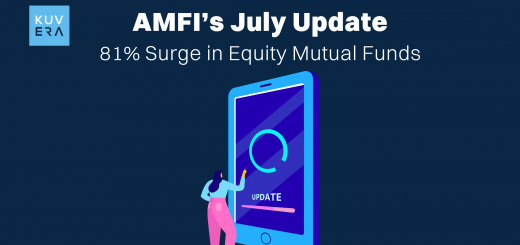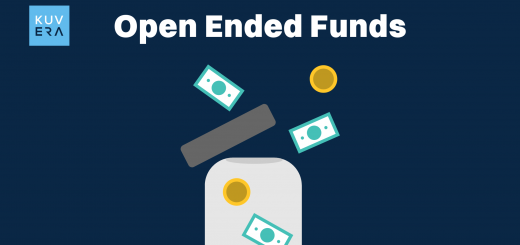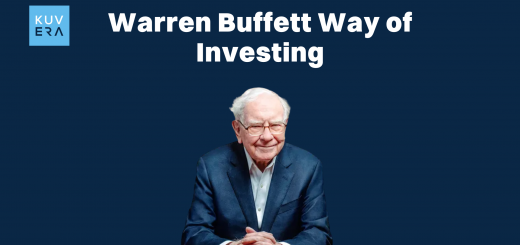Heard of ETF or Exchange Traded Fund? They are a type of passive funds India. Let us look at how they compete against other passive investment India types and mutual funds in general.
What has made ETFs popular?
The momentum behind ETF investments is fuelled by a combination of market trends, technological advancements and changing investor preferences. As ETFs continue to evolve and expand, they are likely to play an increasingly prominent role in global passive investment strategies, attracting a diverse range of investors from different backgrounds and with varying objectives. This dynamic landscape ensures that ETFs remain a compelling choice in the investment world. Further, as more investors become educated about the benefits of ETFs, their adoption has grown, particularly among younger and tech-savvy investors.
ETF investments are gaining momentum worldwide as passive funds India type for several reasons as listed below:
1. International Exposure
Investors can use ETFs to easily gain exposure to foreign markets, thus diversifying their portfolios geographically.
2. Rise of Passive Investment India
There has been a significant trend towards passive investing, where investors seek to replicate market performance rather than trying to outperform it. ETFs are a natural fit for this strategy, as they typically aim to track indices.
3. Enhanced Market Efficiency
The trading mechanism of ETFs allows for arbitrage opportunities, helping to keep the price of the ETF closely aligned with the underlying index. This efficiency attracts both retail and institutional investors.
4. Automated Investment Options
Many robo-advisors incorporate ETFs into their portfolios, making it easier for investors to gain diversified exposure through automated investment strategies. This accessibility appeals to younger investors who prefer digital solutions.
5. Hedging and Diversification
ETFs can be used strategically for hedging against market downturns or specific risks. For instance, investors might use inverse or leveraged ETFs to manage exposure during volatile market conditions.
6. Millennial and Gen Z Investors
Younger generations are increasingly seeking investments that align with their values such as sustainability and technology. Thematic ETFs allow them to invest in companies that reflect these interests.
7. Simplicity and Transparency in Trading
The simplicity of buying and selling ETFs like stocks appeals to many investors who prefer clear, straightforward investment products without the complexities of mutual funds.
8. Globalisation of Investments
ETFs enable investors to easily access emerging markets and sectors that may not be available through traditional mutual funds, broadening investment horizons.
9. Technological Advancements
Improvements in trading technology and platforms have made it easier and more cost-effective to buy and sell ETFs, driving further adoption.
10. Regulatory Support
Regulatory frameworks in many countries have evolved to support the growth of ETFs, providing a conducive environment for their expansion and innovation.
11. Educational Resources
A wealth of educational resources about ETFs is now available, helping investors understand how to incorporate them into their portfolios effectively.
12. Performance in Market Volatility
During periods of market volatility, ETFs can provide a way for investors to maintain exposure to desired asset classes while limiting risks associated with individual stock investments.
13. Customisable Portfolios
Investors can create customised portfolios using various ETFs, allowing them to align their investments with personal financial goals and risk tolerance
Start investing in Index Funds.
Comparison Between Investing in ETFs and Mutual Funds
How to Invest in ETFs?
Investing in ETFs can be a simple and effective way to build a diversified portfolio. By following these steps and staying informed, an investor can make well-informed decisions that align with their financial goals.
1. Understand ETFs
Begin by familiarizing yourself with ETFs. Understand their benefits as well as the risks, including market volatility. Explore different types of ETFs available in the market, including equity ETFs, bond ETFs and thematic ETFs that focus on specific trends or sectors.
2. Choose a Brokerage Account
Select a brokerage firm that offers comprehensive ETF trading services that has low trading fees, no commissions on ETF purchases and user-friendly tools for research and analysis.
3. Research ETFs
Analyse key factors, including the fund’s expense ratio (the annual fee charged by the fund), performance history (how it has performed relative to its benchmark) and the underlying assets it holds. Use financial news and analytical tools to compare different options.
4. Review the Prospectus
Each ETF has a prospectus which is a detailed document that outlines its investment strategy, objectives, risks and holdings. Careful review of the prospectus of any ETF ensures it fits the investment strategy and risk tolerance.
5. Create a Trading Plan
Formulate a clear trading plan that outlines how much capital to invest and whether to make lump-sum investment or implement a dollar-cost averaging approach.
6. Place Order
Use a brokerage account to execute the trade. One needs to decide whether to place a market order (buying at the current market price) or a limit order (setting a specific price at which you want to buy). Each option has its pros and cons so choose based on your trading strategy and market conditions.
7. Monitor Investments
It is crucial to stay informed about market trends and developments that may impact your ETFs. Regularly check the performance of investments against goals and use brokerage’s tools to track price changes, market news and the performance of underlying assets.
8. Rebalance Your Portfolio
Periodically review of investment portfolio ensures it aligns with investment objectives and risk tolerance. If certain ETFs have grown significantly or underperformed, holdings may need to be adjusted. Rebalancing involves selling some assets and buying others to maintain your desired asset allocation.
9. Understand Taxes
Be mindful of the tax implications associated with buying and selling ETFs. Different countries have varying tax rules regarding capital gains and dividends. Understanding these can help plan investment strategy more effectively and minimize potential tax liabilities.
Wrapping Up
ETFs are a part of the passive investments India strategy, they are blessed with lower expense ratios, index mirrored returns and automatic diversification. Similarly, other mutual funds can be active or passive funds India types and might offer other numerous benefits. It is essential to stick to financial goal based planning and invest in exchange traded funds or other mutual funds as per suitability.
Interested in how we think about the markets?
Read more: Zen And The Art Of Investing
Watch here:Nifty 500 Explained: Is it a Better Bet than Nifty 50?












